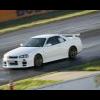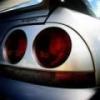R34 Gtr Extensively Modified To Mines Specifications
Announcements
-
Similar Content
-
Latest Posts
-
It's not really a calibration issue, if the voltage is really at 2V. If the voltage is 2V, then that's what the TPS is putting out, and the Haltech is seeing that and 2V is about 40% open (you know, between 0.45v being closed and something close to 4.5V being fully open). So, that would suggest that the TPS is maladjusted, on crooked, something something something. Or a wire problem.
-
I love the S12's. And, welcome back!
-
By BASHERnissan · Posted
Hi guys my TPS voltage is reading over 2v at idle. My Haltech ECU is reading around 40% throttle position at idle also which is really strange. Note the actual throttle position sensor is brand new… anyone have any experience with this or know how to calibrate it on Haltech ? -
By joshuaho96 · Posted
The OEM disk will not work on any AEM ECU, you need to use the one they made. You shouldn't have to flip the CAS or whatever you were describing, if you set the ignition sync offset correctly it can't backfire. Make sure you're using a spark plug lead on coil 1 instead of the timing loop to avoid weird issues with the timing light. Double check that your timing settings are actually correct, like is the 24 tooth configured correct or should it actually be 12 teeth for 1 crank revolution? I also found this: 305817248-AEM-Undocumented-Settings-v1-2.pdf







Recommended Posts
Create an account or sign in to comment
You need to be a member in order to leave a comment
Create an account
Sign up for a new account in our community. It's easy!
Register a new accountSign in
Already have an account? Sign in here.
Sign In Now